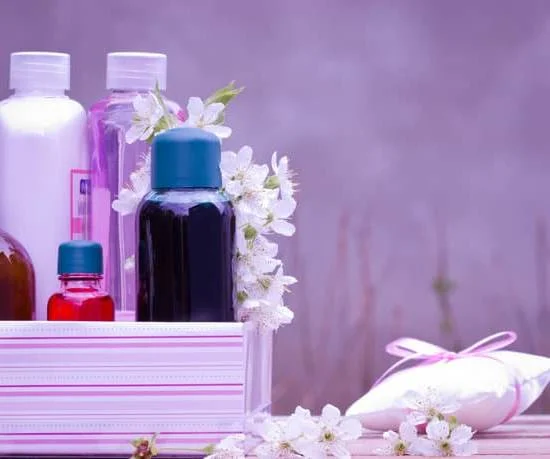Aromatherapy skin oils have gained popularity in the skincare world for their natural and therapeutic benefits. If you’re wondering how to apply aromatherapy skin oils, you’ve come to the right place. In this article, we’ll provide a comprehensive guide on understanding different types of aromatherapy skin oils, choosing the right oil for your skin type, proper storage and handling, techniques for application, safety precautions, incorporating oils into your skincare routine, and DIY recipes.
Aromatherapy skin oils are derived from natural plant extracts and are used for their aromatic and healing properties. These oils are known to offer a wide range of benefits for skincare, including moisturizing, soothing, and rejuvenating the skin. Whether you have dry skin, acne-prone skin, or aging skin, there is an essential oil that can address your specific needs.
When it comes to applying aromatherapy skin oils, it’s important to understand the different types of essential oils available and how they can be beneficial for your skin. From popular choices like lavender and rose to tea tree and chamomile, each oil offers unique properties that can help improve the condition of your skin. Understanding these differences will allow you to make informed decisions about which oils to incorporate into your skincare routine.
Understanding Different Types of Aromatherapy Skin Oils
Aromatherapy skin oils are natural, plant-derived oils that are used in skincare for their aromatic and therapeutic properties. These oils are commonly used in aromatherapy practices and have gained popularity for their ability to improve skin health, appearance, and overall well-being. Aromatherapy skin oils can be derived from a variety of plants and flowers, each with its own unique benefits and uses.
Overview of Popular Essential Oils
There are several popular essential oils used in aromatherapy skincare, each with its own distinct aroma and properties. Some of the most commonly used essential oils include lavender, rose, tea tree, chamomile, and peppermint.
Lavender oil is known for its calming and soothing effects on the skin, making it ideal for those with sensitive or easily irritated skin. Rose oil is praised for its hydrating and anti-aging benefits, while tea tree oil is often used to target acne-prone or congested skin.
Descriptions of Benefits and Uses
Each essential oil offers specific benefits and uses for the skin. Lavender oil not only helps calm redness and irritation but also promotes relaxation and stress relief when inhaled. Rose oil is known for promoting cell regeneration and improving moisture levels in the skin.
Tea tree oil possesses powerful antimicrobial properties that make it an effective treatment for acne and other blemishes. Understanding the benefits and uses of different essential oils is crucial in selecting the right aromatherapy skin oil for individual skincare needs.
When considering how to apply aromatherapy skin oils, it is important to first understand the unique properties of each essential oil before incorporating them into a skincare routine. By selecting the right essential oils based on their benefits, individuals can create a personalized approach to caring for their specific skincare concerns.
How to Choose the Right Aromatherapy Skin Oil for Your Skin Type
Choosing the right aromatherapy skin oil for your specific skin type and concerns is crucial in reaping the full benefits of these natural remedies. With countless essential oils available, it can be overwhelming to determine which one is best suited for your needs. Below, we’ll explore a guide on selecting the best oils for different skin concerns and provide tips for mixing and matching oils for personalized skincare blends.
Guide on Selecting the Best Oils
When it comes to choosing the right aromatherapy skin oil, it’s important to consider your skin type and any specific skincare concerns you may have. For example, if you have dry or sensitive skin, opt for hydrating and gentle oils such as rose or chamomile. On the other hand, if you struggle with acne-prone or oily skin, tea tree oil or lavender can help balance oil production and reduce inflammation.
Tips for Mixing and Matching Oils
Once you’ve identified your primary skin concerns, consider creating custom skincare blends by mixing different essential oils together. For instance, if you have aging skin with hyperpigmentation issues, combining rosehip seed oil with frankincense can help improve elasticity and even out skin tone. It’s important to dilute essential oils with carrier oils like jojoba or almond oil to ensure safe application on the skin.
Personalized Skincare Blends
Creating personalized skincare blends allows you to address multiple skin concerns at once. For instance, a blend of lavender, geranium, and ylang-ylang can be soothing for both sensitive skin types while promoting overall relaxation. Experimenting with different combinations will help you find the perfect aromatherapy blend tailored to your unique skincare needs.
By understanding your individual skin type and knowing which essential oils align best with your specific concerns, you can effectively incorporate aromatherapy skin oils into your daily skincare routine to achieve healthier-looking skin.
Proper Storage and Handling of Aromatherapy Skin Oils
When it comes to ensuring the effectiveness of your aromatherapy skin oils, proper storage and handling are crucial. Essential oils are highly concentrated and can lose their potency if not stored correctly. The first step in maintaining the quality of your oils is to keep them away from direct sunlight and heat. Store them in a cool, dark place such as a cabinet or drawer.
Additionally, essential oils should be kept in dark-colored glass bottles to minimize exposure to light, which can cause them to degrade. It’s also important to keep the bottles tightly sealed when not in use to prevent oxidation. This will help maintain the freshness and effectiveness of the oils over time.
To further prolong the shelf life of your aromatherapy skin oils, consider storing them in the refrigerator. This is especially beneficial for citrus or floral oils, as they tend to degrade more quickly than other types of essential oils. When properly stored, essential oils can maintain their potency for several years.
| Storage Tips | Handling Guidelines |
|---|---|
| Away from direct sunlight and heat | Keep bottles tightly sealed |
| Use dark-colored glass bottles | Avoid prolonged exposure to air |
| Consider refrigeration for certain oils | Label bottles with purchase date for reference |
By following these storage and handling guidelines, you can ensure that your aromatherapy skin oils remain fresh and effective for an extended period of time. This will allow you to fully experience the benefits of using essential oils in your skincare routine.
Techniques for Applying Aromatherapy Skin Oils
Aromatherapy skin oils can be a luxurious addition to your skincare routine, providing both physical and emotional benefits. Whether you want to relax, rejuvenate, or treat a specific skin concern, knowing how to apply aromatherapy skin oils is essential for maximizing their effectiveness.
One of the most common and effective methods for applying aromatherapy skin oils is through massage. By diluting the essential oils with a carrier oil such as jojoba or sweet almond oil, you can create a custom massage blend that not only nourishes your skin but also delivers the aromatic benefits of the essential oils. This method allows for deep absorption of the oils into the skin while promoting relaxation and reducing muscle tension.
Another popular technique for applying aromatherapy skin oils is through facial steaming. Adding a few drops of essential oil to a bowl of hot water and gently steaming your face with a towel over your head can help open up pores, allowing the oils to penetrate deeply. Different essential oils can target different skincare concerns, such as acne-prone skin or dryness, making this method highly adaptable.
Lastly, adding aromatherapy skin oils to your bath is an indulgent way to enjoy their benefits while unwinding after a long day. By incorporating essential oils into bath salts or dispersing them in the bathwater using a carrier oil, you can create a spa-like experience at home. Not only does this method nurture your skin from head to toe, but it also allows you to fully experience the aromatic properties of the oils.
| Application Method | Benefits |
|---|---|
| Massage | Nourishes skin, promotes relaxation, reduces muscle tension |
| Facial Steaming | Targets skincare concerns, opens up pores for deep penetration |
| Bath | Nurtures skin from head to toe, provides spa-like experience at home |
Safety Precautions and Considerations
When using aromatherapy skin oils, it is important to take certain safety precautions and considerations into account to ensure a positive and safe experience. Essential oils are concentrated plant extracts that can have powerful effects on the body, so it is crucial to use them responsibly.
One important safety consideration is to always perform a patch test before using a new essential oil on the skin. This involves applying a small amount of diluted oil to a small area of skin and waiting 24 hours to check for any adverse reactions.
In addition, it is vital to be aware of any potential allergic reactions or sensitivities that you may have to specific essential oils. Some individuals may have allergies to certain plants or may be sensitive to strong scents, so it is important to carefully research and test oils before incorporating them into your skincare routine. Furthermore, pregnant women, young children, and individuals with certain medical conditions should consult with a healthcare professional before using aromatherapy skin oils.
Another key safety precaution when using aromatherapy skin oils is to always follow proper dilution guidelines. Undiluted essential oils can be irritating or even harmful to the skin, so they should always be diluted with a carrier oil before being applied topically.
Understanding the proper dilution ratios for different essential oils is essential for ensuring safe use and preventing any adverse reactions. Learning about potential interactions between essential oils and medications is also crucial for avoiding any negative effects on your health.
Overall, by taking these safety precautions and considerations into account, you can enjoy the benefits of aromatherapy skin oils in a safe and responsible manner. It is important to educate yourself on how to apply aromatherapy skin oils properly while also being mindful of potential risks and sensitivities that may affect your individual experience with essential oils. By doing so, you can incorporate these natural skincare products into your routine with confidence and peace of mind.
Incorporating Aromatherapy Skin Oils Into Your Skincare Routine
Aromatherapy skin oils are a fantastic addition to any skincare routine, offering a natural and holistic approach to maintaining healthy and radiant skin. Whether used alone or in combination with other products, these oils can provide numerous benefits, including hydration, antioxidant protection, soothing properties, and stress relief. With the right application techniques and proper selection of oils, you can maximize the potential of aromatherapy skin oils for your skin.
When incorporating aromatherapy skin oils into your skincare routine, it’s important to consider your skin type and specific concerns. Different essential oils have unique properties that cater to various skin needs. Here are some tips on how to apply aromatherapy skin oils effectively:
1. Facial Massage: Gently massage a few drops of your chosen oil into your face using upward strokes. This not only helps in distributing the oil evenly but also improves circulation and relaxes facial muscles.
2. Facial Steam: Add a few drops of essential oil to a bowl of steaming hot water and lean over it with a towel covering your head to trap the steam. This method helps open up pores and allows the oil to penetrate deeply into the skin.
3. Bath Soak: Mix a few drops of essential oil with carrier oil or bath salts before adding it to your bathwater for a luxurious and aromatic experience while nourishing your skin.
By following these methods, you can experience the full benefits of aromatherapy skin oils tailored specifically for your skincare needs.
In addition to application techniques, proper storage and handling of aromatherapy skin oils are crucial in maintaining their quality and potency. Always keep them in dark glass containers away from direct sunlight and extreme temperatures. This preserves the integrity of the oils, ensuring they remain fresh and effective for longer periods. Remember to handle essential oils with care to prevent accidental spills or exposure to sensitive areas such as eyes and mucous membranes.
DIY Aromatherapy Skin Oil Recipes
In conclusion, incorporating aromatherapy skin oils into your skincare routine can be a wonderful way to nourish and pamper your skin. Whether you are looking to address specific skin concerns or simply indulge in the luxurious experience of using essential oils, there are many benefits to be gained from integrating aromatherapy into your daily beauty regimen.
By understanding the different types of aromatherapy skin oils and how they can benefit various skin types, you can make informed decisions about which oils are best suited for your individual needs. From dry skin to acne-prone skin, there is a wide range of essential oils available that cater to specific concerns. Additionally, learning how to properly store and handle these oils is crucial in maintaining their quality and effectiveness over time.
When it comes to applying aromatherapy skin oils, there are various techniques that you can explore, such as gentle massage, facial steams, and adding a few drops to your bath. These methods not only allow for the absorption of the beneficial properties of the oils into the skin but also provide a relaxing and sensory experience.
By following safety precautions and considering potential allergic reactions or sensitivities, you can enjoy the benefits of aromatherapy without any adverse effects. Even better, with DIY aromatherapy skin oil recipes, you have the freedom to create custom blends tailored to your specific skincare needs.
Overall, by following this guide on how to choose, apply, and customize aromatherapy skin oils for your skincare routine, you can elevate your self-care rituals and experience all that these natural remedies have to offer. Whether you want to unwind after a long day or improve the overall health of your complexion, incorporating aromatherapy into your daily routine is an effective way to promote holistic well-being both inside and out.
Frequently Asked Questions
How Do You Use Aroma Oil on Your Skin?
Aroma oil can be used on the skin by diluting it with a carrier oil, such as coconut or jojoba oil, before applying it. This helps prevent any irritation or allergic reactions, and also allows for better absorption into the skin.
Can You Apply Essential Oils Directly to Skin?
It is not recommended to apply essential oils directly to the skin without dilution, as they can cause irritation, redness, or even burns. Always mix essential oils with a carrier oil before applying them to your skin to ensure safety and effectiveness.
How Do You Use Aromatherapy Body Oils?
Aromatherapy body oils can be used by massaging them into the skin after a shower or bath. The gentle massage combined with the aromatic properties of the oils can help promote relaxation, relieve stress, and nourish the skin. These body oils are a wonderful way to incorporate aromatherapy into your self-care routine.

Are you looking for a natural way to improve your health and wellbeing?
If so, aromatherapy may be the answer for you.





